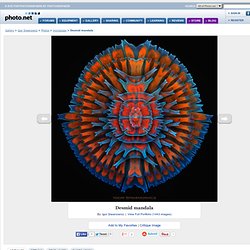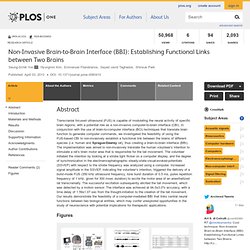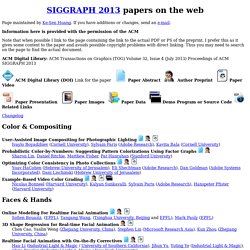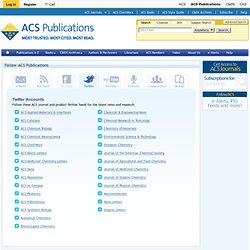

Getting started. Getting started. Getting started. Desmid mandala: Photo by Photographer Igor Siwanowicz. Photo eCards from photo.net are a way to email someone a photo.net Gallery photo with your personal greeting or message.

Send an eCard to your contacts to announce your portfolio on photo.net. Send one of your own photos as an eCard to ask another photo.net member to write a critique of it. Share photos and portfolios that you have discovered on photo.net with your friends. Or just send someone a greeting or message for a birthday, holiday, or other occasion or observance. The recipients will receive an email from photo.net announcing that they have received the eCard, with a link back to photo.net. Photo.net eCards are free: by sending one, you are letting others know about photo.net and the exceptional photographers on the site! You must be logged in as a registered user to send an ecard. Galerie de nickybay. Non-Invasive Brain-to-Brain Interface (BBI): Establishing Functional Links between Two Brains. Transcranial focused ultrasound (FUS) is capable of modulating the neural activity of specific brain regions, with a potential role as a non-invasive computer-to-brain interface (CBI).

In conjunction with the use of brain-to-computer interface (BCI) techniques that translate brain function to generate computer commands, we investigated the feasibility of using the FUS-based CBI to non-invasively establish a functional link between the brains of different species (i.e. human and Sprague-Dawley rat), thus creating a brain-to-brain interface (BBI). The implementation was aimed to non-invasively translate the human volunteer’s intention to stimulate a rat’s brain motor area that is responsible for the tail movement. SIGGRAPH 2013 Papers. Page maintained by Ke-Sen Huang.

If you have additions or changes, send an e-mail. Information here is provided with the permission of the ACM Note that when possible I link to the page containing the link to the actual PDF or PS of the preprint. I prefer this as it gives some context to the paper and avoids possible copyright problems with direct linking. Thus you may need to search on the page to find the actual document. ACM Digital Library: ACM Transactions on Graphics (TOG) Volume 32, Issue 4 (July 2013) Proceedings of ACM SIGGRAPH 2013 ACM Digital Library (DOI) Link for the paper Paper Abstract Author Preprint Paper Video Paper Presentation Paper Images Paper Data Demo Program or Source Code Related Links. Ryerson Multimedia Research Laboratory. Welcome - NYU Computer Science Department.
Learning and modeling the circuits that operate life: The Bonneau lab aims to learn large biological networks directly from genomics data (genomics =3D very scalable biology experiments).

Our recent work, as part of collaborative teams of systems biologists and computational biologists, has recently resulted in genome-wide models that are capable of simulating the functioning of the genome in real time (Bonneau, et. al, 2006, Cell). Dr. Bonneau's lab develops new algorithms that attempt to learn the regulatory networks (their topology and dynamical parameters) that are at the core of biological systems. This work was featured in a 2008 Discover Article, where Dr. Bonneau was selected as one of the top 20 scientists under 40. With Ph.D. student Eugene Weinstein and Google researcher Pedro Moreno, Mehryar Mohri is working on audio fingerprinting techniques that enable computers to recognize songs. Follow ACS Publications. E-Alerts ASAPSM Alerts Daily or weekly email alerts when individual articles (Articles ASAPSM) from the journal(s) you have selected are released on the web.

Table of Contents (TOC) Alerts Email alerts with the Table of Contents for specific issues on the day the complete issue is posted to the web. Log in to sign up for Journal Email Alerts or modify your existing alerts. Facebook Accounts The American Chemical Society. Scientists identify molecular trigger for Alzheimer’s disease. Printer friendly version Share 20 May 2013 Cambridge, University of Researchers have pinpointed a catalytic trigger for the onset of Alzheimer’s disease – when the fundamental structure of a protein molecule changes to cause a chain reaction that leads to the death of neurons in the brain.

For the first time, scientists at Cambridge’s Department of Chemistry have been able to map in detail the pathway that generates “aberrant” forms of proteins which are at the root of neurodegenerative conditions such as Alzheimer’s. They believe the breakthrough is a vital step closer to increased capabilities for earlier diagnosis of neurological disorders such as Alzheimer’s and Parkinson’s, and opens up possibilities for a new generation of targeted drugs, as scientists say they have uncovered the earliest stages of the development of Alzheimer’s that drugs could possibly target. “There are no disease modifying therapies for Alzheimer’s and dementia at the moment, only limited treatment for symptoms. University of Central Florida. Journal home : Nature. Raphael Lis, Charles C.

Karrasch, Michael G. Poulos, Balvir Kunar, David Redmond, Jose G. Barcia Duran, Chaitanya R. Badwe, William Schachterle, Michael Ginsberg, Jenny Xiang, Arash Rafii Tabrizi, Koji Shido, Zev Rosenwaks, Olivier Elemento, Nancy A. Speck, Jason M. Minds.